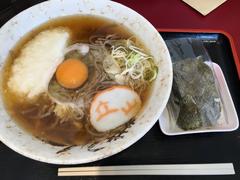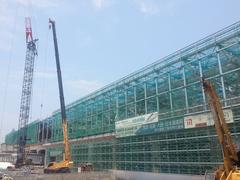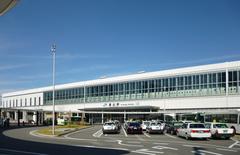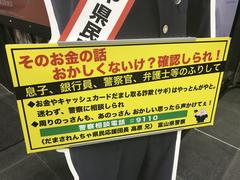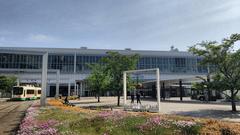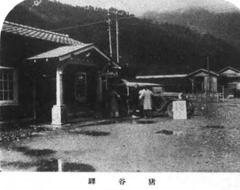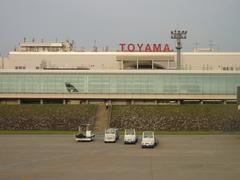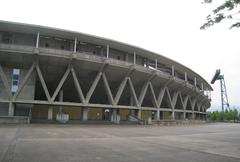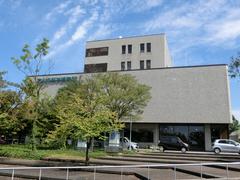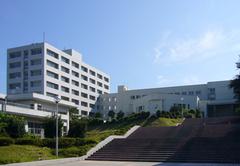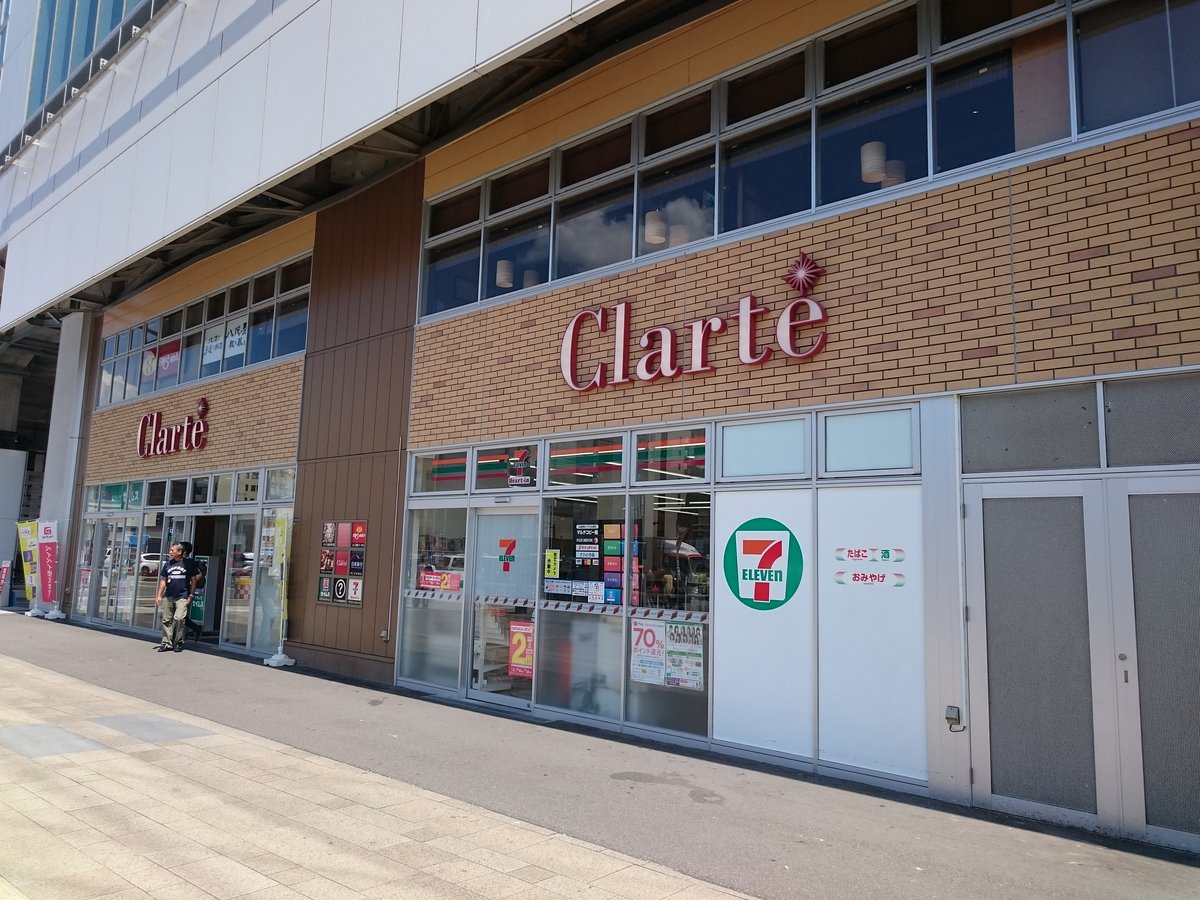
Toyama Station Visiting Hours, Tickets, and Comprehensive Travel Guide to Toyama Historical Sites
Date: 14/06/2025
Introduction to Toyama Station and Its Importance
Toyama Station stands as the vibrant gateway to Toyama City, seamlessly blending the region’s feudal heritage with forward-thinking urban development. Established in 1899 during the Meiji era, it transformed from a castle town hub into a critical transportation center, connecting local, regional, and high-speed rail networks. Its hallmark glass roof, designed to shelter travelers from Toyama’s heavy snowfalls, reflects the city’s focus on sustainable, visitor-friendly infrastructure (Toyama Historical Overview, Kurby Blog, Panorama Solutions).
Beyond transportation, Toyama Station is a hub for culture, commerce, and community. It provides convenient access to the Hokuriku Shinkansen, Ainokaze Toyama Railway, Toyama Chiho Railway, and extensive tram and bus networks (jprail.com). The area offers multilingual ticketing, accessibility features, shopping, dining, and is a short walk or tram ride from landmarks like Toyama Castle and the Toyama Glass Art Museum. Nature lovers can relax at Fugan Unga Kansui Park or enjoy the Matsukawa River’s seasonal events (Toyama City Tourism, matcha-jp.com).
This guide equips travelers with in-depth knowledge about Toyama Station’s history, ticketing, accessibility, nearby attractions, and practical tips for a rewarding visit to Toyama City.
Contents
- Toyama Station Overview: History and Modern Role
- Feudal Roots and Urban Evolution
- Railways and Modernization
- Postwar Growth and Urban Planning
- Sustainability and Compact City Initiatives
- Visiting Toyama Station: Hours, Tickets, and Accessibility
- Station Layout and Facilities
- Intermodal Connections: Rail, Tram, Bus
- Passenger Services and Amenities
- Navigating the Station: Signage and Assistance
- Tips for Travelers
- Toyama Castle: Visiting Hours, Tickets, and History
- Top Attractions Near Toyama Station
- Cultural Highlights and Events
- Local Food and Dining Culture
- Planning Your Visit: Practical Advice
- Day Trips and Excursions
- FAQ
- Resources and Further Reading
Toyama Station Overview: History and Modern Role
Toyama Station is more than a transit point—it is the starting line for exploring the city’s rich past and dynamic present. With robust connections and modern amenities, it sets the tone for your journey in Toyama.
Feudal Roots and Urban Evolution
Toyama flourished as a strategic castle town on the Toyama Plain, coveted by feudal lords for its resources and position. In the Edo Period (1603–1868), it gained renown as a center for medicine distribution, washi paper production, and religious pilgrimage to Mt. Tateyama (Toyama Historical Overview). Sites near the station still echo this heritage, offering visitors a glimpse into the city’s storied past.
Railways and Modernization
The arrival of the railway during the Meiji Restoration revolutionized Toyama, with the station’s 1899 opening integrating the city into the Hokuriku Main Line. This spurred the growth of industries such as pharmaceuticals and glass manufacturing (Kurby Blog). Travelers today benefit from seamless ticketing for local lines and the Hokuriku Shinkansen.
Postwar Growth and Urban Planning
After World War II, Toyama Station was rebuilt to accommodate growing passenger numbers and the city’s expanding role as a regional hub. The station area became a center for commerce and public transport, with concrete and steel reshaping the urban landscape (Kurby Blog).
Sustainability and Compact City Initiatives
Facing demographic and spatial challenges, Toyama adopted Transit-Oriented Development (TOD), fostering dense, mixed-use neighborhoods around the station. The Central District Revitalization Basic Plan and Public Transport Revitalization Plan spurred new residential, commercial, and cultural facilities (Springer, World Bank). The iconic glass roof and 24-hour bike-sharing exemplify this commitment to sustainability (Panorama Solutions).
Visiting Toyama Station: Hours, Tickets, and Accessibility
- Operating Hours: Daily from approximately 5:00 AM to midnight. Ticket counters and services operate during regular business hours.
- Ticketing: Purchase tickets at counters or machines for local, shinkansen, and bus travel. Online ticketing is available for many routes.
- Accessibility: Barrier-free facilities include elevators, ramps, accessible restrooms, and wheelchair rental.
International visitors benefit from multilingual signage and tourist information centers for seamless navigation.
Station Layout and Facilities
Multi-Level Design
- Ground Level (1F): Platforms for Ainokaze Toyama Railway (tracks 4–6), ticketing, main concourse, shops, and south exits to downtown (jprail.com).
- Third Level (3F): Hokuriku Shinkansen (tracks 11–14) and additional Ainokaze Toyama Railway platforms, plus access to JR Takayama Line.
- Connecting Bridge: Links ground and third levels and connects north and south exits.
Ticket Gates and Exits
- South Side: Main exit with Hokuriku Shinkansen Central Gate and Ainokaze Toyama Railway South Gate, offering direct connections to Dentetsu Toyama Station (for Toyama Chiho Railway) and tram stops.
- North Side: Ainokaze Toyama Railway North Gate (accepts JR Passes and regional passes).
Platforms
- Hokuriku Shinkansen: Two platforms for Tokyo/Nagano and Kanazawa, with clear multilingual signage.
- Ainokaze Toyama Railway & JR Takayama Line: Shared platforms for regional and limited express trains.
- Accessibility: Elevators, escalators, and stairs connect all levels.
Intermodal Connections
- Toyama Chiho Railway (Dentetsu Toyama Station): Adjacent to the main station, providing access to the Tateyama Kurobe Alpine Route and regional destinations.
- Tram & Light Rail: Three main stops (Toyamaeki, Dentetsu-Toyamaeki Esta-Mae, Toyamaekikita) connect the station to city attractions and neighborhoods.
- Bus Terminals: South-side terminal serves local and express buses to destinations like Shirakawago and Takayama. Advance reservations are recommended for popular routes (jprail.com).
Passenger Services and Amenities
- Ticketing: Multiple counters and machines for JR and private lines, with English support.
- Information Centers: Multilingual assistance, maps, and brochures.
- Luggage: Coin lockers (including large sizes) and manned storage/delivery services.
- Shopping & Dining: A station mall features local crafts, specialty foods, and a range of restaurants including Toyama Bay sushi and Toyama Black ramen (matcha-jp.com).
- Accessibility: Elevators, tactile paving, accessible restrooms, and rest areas throughout.
- Connectivity: Free Wi-Fi and charging stations in waiting areas.
Navigating the Station: Signage and Support
- Signage: Clear multilingual signs and pictograms guide travelers to platforms, exits, and facilities.
- Maps: Intuitive station layout with staff assistance available (jprail.com).
Tips for Travelers
- Operating Hours: Most station services run from 5:30 AM–11:00 PM; confirm shop and service hours in advance (Official Toyama Station Website).
- Ticketing: Use JR Pass or regional passes for savings, but check which lines are covered.
- Transfers: JR and Ainokaze Toyama Railway share platforms. Double-check tickets and platforms when transferring.
- Luggage: Use lockers or delivery if exploring before hotel check-in.
- Accessibility: Request assistance at information desks if needed.
Toyama Castle: History, Hours, Tickets, and Visitor Information
Toyama Castle is a symbol of the city’s resilience and history, originally built in 1543 and reconstructed in 1954. The castle now houses the Toyama Municipal Folk Museum, with samurai armor, artifacts, and historical displays.
- Opening Hours: 9:00 AM–5:00 PM (last admission 4:30 PM)
- Closed: Mondays (or next day if Monday is a holiday), Dec 29–Jan 3
- Admission: Adults 310 yen, High school 200 yen, Children 100 yen, under 6 free
- Access: 15-min walk or tram from Toyama Station (Shijo stop; 210 yen fare)
Guided tours (Japanese/English) and seasonal events like cherry blossom viewing and illuminated night tours are available. Facilities include barrier-free access, restrooms, souvenir shop, and café.
Major Attractions Near Toyama Station
Toyama Glass Art Museum
A showcase of contemporary glass art and innovative architecture, the Toyama Glass Art Museum is about 20 minutes’ walk or a short tram ride from the station. It features permanent and rotating exhibitions, workshops, and lectures. The nearby Toyama Glass Studio offers hands-on glassblowing experiences.
- Hours: 9:30 AM–6:00 PM (last entry 5:30 PM), closed Tuesdays and year-end holidays
- Admission: 400 yen; free under 18
Fugan Unga Kansui Park
An expansive urban park near the station, Fugan Unga Kansui Park features picturesque waterways, lawns, and mountain views. Open 24 hours, it’s ideal for walks, boating (seasonal), and enjoying the famed Starbucks with panoramic vistas.
Toyama Castle Ruin Park
The park surrounding Toyama Castle offers green space, art, and a reconstructed keep, reflecting the city’s feudal heritage.
Matsukawa River and Boat Cruises
The Matsukawa River is lined with cherry blossoms and offers springtime pleasure boat cruises—especially beautiful in April.
Toyama City Hall Observatory
The observatory provides sweeping views of the city and Tateyama Mountains, open 9:00 AM–9:00 PM daily.
Ikedaya Yasubei Shoten
This historic pharmacy near the station introduces visitors to Toyama’s medicinal traditions, including hands-on experiences.
Toyama Prefectural Museum of Art and Design
A tram ride from the station, the museum features modern and contemporary art and a rooftop garden.
Cultural Highlights and Events
- Owara Kaze-no-Bon Festival: Held annually from September 1–3 in Yatsuo district, featuring traditional dance and music.
- Cherry Blossom Viewing: Matsukawa River and Kansui Park offer spectacular hanami (early to mid-April).
- Tateyama Kurobe Alpine Route: Easily accessed from Toyama Station, this route offers stunning mountain scenery and the famous snow corridor (April–June).
Local Cuisine and Food Culture
- Toyama Bay Sushi: Featuring specialties like shiroebi (glass shrimp), buri (yellowtail), and firefly squid.
- Toyama Black Ramen: Distinctive black-broth ramen popular in the region.
- Seafood and Local Delicacies: Sampled at station restaurants and local eateries (matcha-jp.com).
Planning Your Visit: Practical Advice
- Tickets: Purchase at station or online; use IC cards for convenience.
- Accessibility: Barrier-free facilities at the station and major attractions.
- Guided Tours: Available at key sites—book in advance for special events.
- Accommodation: Range of hotels near the station; book early for busy seasons.
- Best Times to Visit: Spring (cherry blossoms), summer (festivals), autumn (foliage), winter (snow and Alpine Route).
- Local Experiences: Ride vintage trams, try glassblowing workshops, or explore medicinal heritage at Ikedaya Yasubei Shoten.
- Day Trips: Takaoka, Kurobe Gorge, and Amaharashi Coast are accessible from the station.
FAQ
Q: What are Toyama Station’s visiting hours?
A: Station operates 5:00 AM–midnight; ticket counters and shops have varied hours.
Q: How do I buy tickets?
A: At station counters, machines, or online. Passes available for JR and regional lines.
Q: Is the station accessible?
A: Yes, with elevators, ramps, and accessible restrooms.
Q: Are guided tours available?
A: Yes, at major sites and via local tourist associations.
Q: What are must-see attractions nearby?
A: Toyama Castle, Glass Art Museum, Kansui Park, Matsukawa River, and the Alpine Route.
Visuals and Interactive Content
Explore virtual tours on official attraction sites, use interactive maps at the station, and enjoy high-quality images of Toyama Station, local landmarks, and seasonal events. Descriptive alt text is provided for accessibility.
Resources and Further Reading
- Toyama Historical Overview
- Kurby Blog: Toyama’s Architectural Evolution
- Panorama Solutions: Toyama City Project Brief
- Toyama Station Guide: Visiting Hours, Tickets, Facilities & Nearby Attractions
- World Bank: Development Knowledge of Toyama City
- Springer: TOD as a Rail Integrated Urban Regeneration Strategy
- Toyama City Tourism Official Site
- Matcha Japan: Toyama Travel Guide
- Japan Travel: Owara Kaze-no-Bon Festival
Conclusion and Call to Action
Toyama Station exemplifies the city’s unique fusion of historical depth, modern convenience, and sustainable vision. With its accessible facilities, extensive transport connections, and proximity to cultural and natural attractions, it is the ideal starting point for your Toyama adventure.
Plan your visit today—download the Audiala app for real-time transit updates, interactive guides, and exclusive discounts. Follow us on social media for the latest travel inspiration, event news, and insider tips to make your Toyama journey unforgettable.

